A tree is genetically programmed to recognize a forest environment, not an urban setting. In the forest, year after year, leaf decomposition creates soil nutrients that are essential to tree vigor.
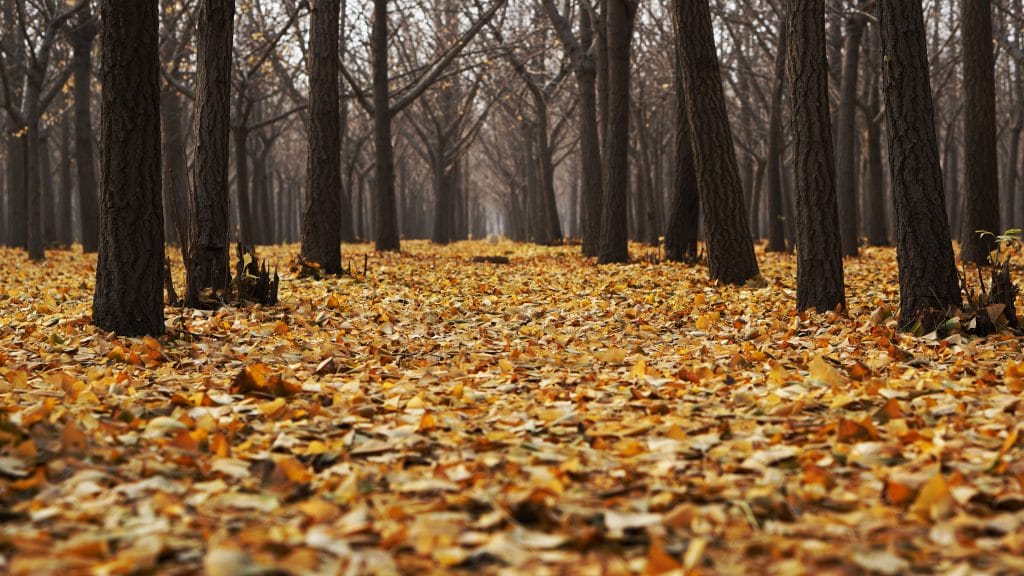
The above picture is an example of a forest environment with leaf litter, twigs, branches, and even the trees themselves falling on the ground and naturally decomposing and adding nutrients back to the soil.
 Mycorrhizal fungi colonize the roots of many plants. Mycorrhizal fungi don’t harm the plant; on the contrary, they develop a “symbiotic” relationship that helps the plant be more efficient at obtaining nutrients and water. In return, the plant provides energy to the fungus in the form of sugars.
Mycorrhizal fungi colonize the roots of many plants. Mycorrhizal fungi don’t harm the plant; on the contrary, they develop a “symbiotic” relationship that helps the plant be more efficient at obtaining nutrients and water. In return, the plant provides energy to the fungus in the form of sugars.
The fungus is actually a network of filaments that grow in and around the plant root cells, forming a mass that extends considerably beyond the plant’s root system. This essentially extends the plant’s reach to water and nutrients, allowing it to utilize more of the soil’s resources.
In an urban setting, we rake away our leaves, plant grass or pave with asphalt. These conditions change moisture patterns and cause competition for nutrients. In addition, we construct buildings and sidewalks too close to trees, thereby constricting root zones.

The foundation of any “URBAN” tree management
plan should include nutrient management. This
will include the use of fertilizers to some degree.
There has been much debate regarding the over use
Program of fertilizers, and excessive nutrients reaching into
streams, ponds, lakes, rivers and ground water.
And, yes this is a concern that has to be managed with due care.
MULCHING – less fertilizer – greater benefits!
One of the best ways to manage tree roots, nutrients and moisture – is by proper mulching. Remember – this is similar to what nature intended.
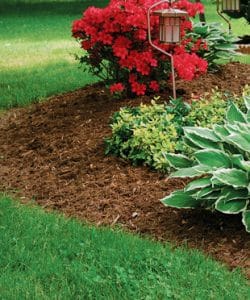
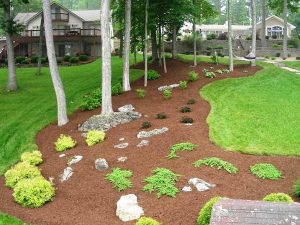
Florida Fertilizer License and Green Industry Best Management Practices
On June 18, 2009, Florida Governor Charlie Christ signed into law SB 494 requiring all commercial fertilizer applicators to have an FDACS fertilizer license by January 1, 2014. The license is called the Limited Certification for Urban Landscape Commercial or, more simply the Fertilizer Certification.
SOIL ANALYSIS “to determine fertilization needs.”
http://solutionsforyourlife.ufl.edu/hot_topics/agriculture/soil_testing.shtml
Fertilizer is often misunderstood and misused. Fertilizer is not “food.” Plants produce their own food in the form of sugars through photosynthesis. The minerals or nutrients supplied by fertilizer provide the ingredients needed for photosynthesis and growth. When minerals are lacking or absent in the soil, fertilizer can be added to maintain an adequate supply. Fertilizer should not be considered a cure for ailing plants when un-adapted or unhealthy plants are chosen, carelessly planted or improperly watered. When fertilizing trees and shrubs, keep these two points in mind: (1) Fertilizer is beneficial when it is needed; but (2) Use it in the right amount, at the right time and in the right place.
In the absence of a soil test, the best indicator of the need for additional fertilization of established trees is shoot growth. If new shoot growth (growth occurring in the present year) is in excess of 6 inches, then fertilization is probably unnecessary. If shoot growth is between 2 and 6 inches then fertilizer may be applied and, if shoot growth is under 2 inches, then fertilizer applications may be appropriate.
Fertilization is being increasingly emphasized as we learn more about the importance of soil fertility to overall tree health, vigor, and resistance to insects, disease and decline. In addition, the severity of plant stress caused by temperature extremes, pollution, drought and construction activities can be significantly decreased through fertilization.
Application rates: Fertilizer rates are based on the nitrogen content of the fertilizer. As a general rule (without a soil analysis) apply 0.50 pounds of nitrogen per inch of trunk diameter. Another, generally more accurate, method of determining fertilizer rates is the crown spread technique in which fertilizer rates are based on the soil surface area beneath the crown. To use this method, apply 6 pounds of nitrogen per 1,000 square feet of soil surface beneath the crown of the tree.
Granular Fertilizer and a broadcast spreader on right.
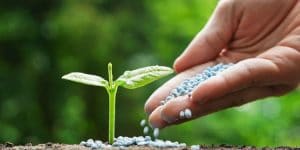
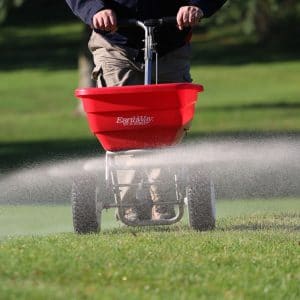
Application methods:
Root feeding (sub-surface applications) -including drenching, soil injection, and drilling holes.
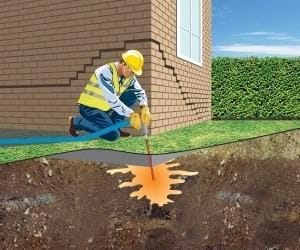
Surface applications – by hand or spreader.
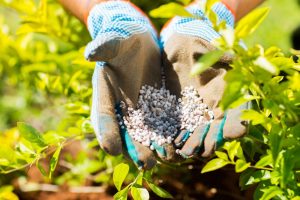
Micro Injections (tree trunk) below
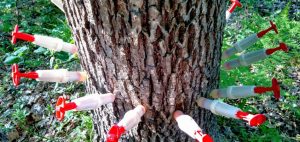
Macro Injections (tree trunk) below
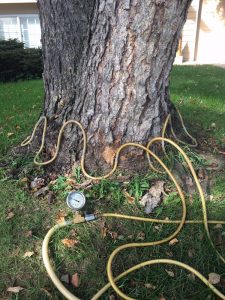
As you have seen – there are many application methods. Although the best and least injurious work through the soil and allow the trees root system to absorb the nutrients. Placing fertilizer in the correct area of the root zone is critical. NEVER OVER FERTILIZE